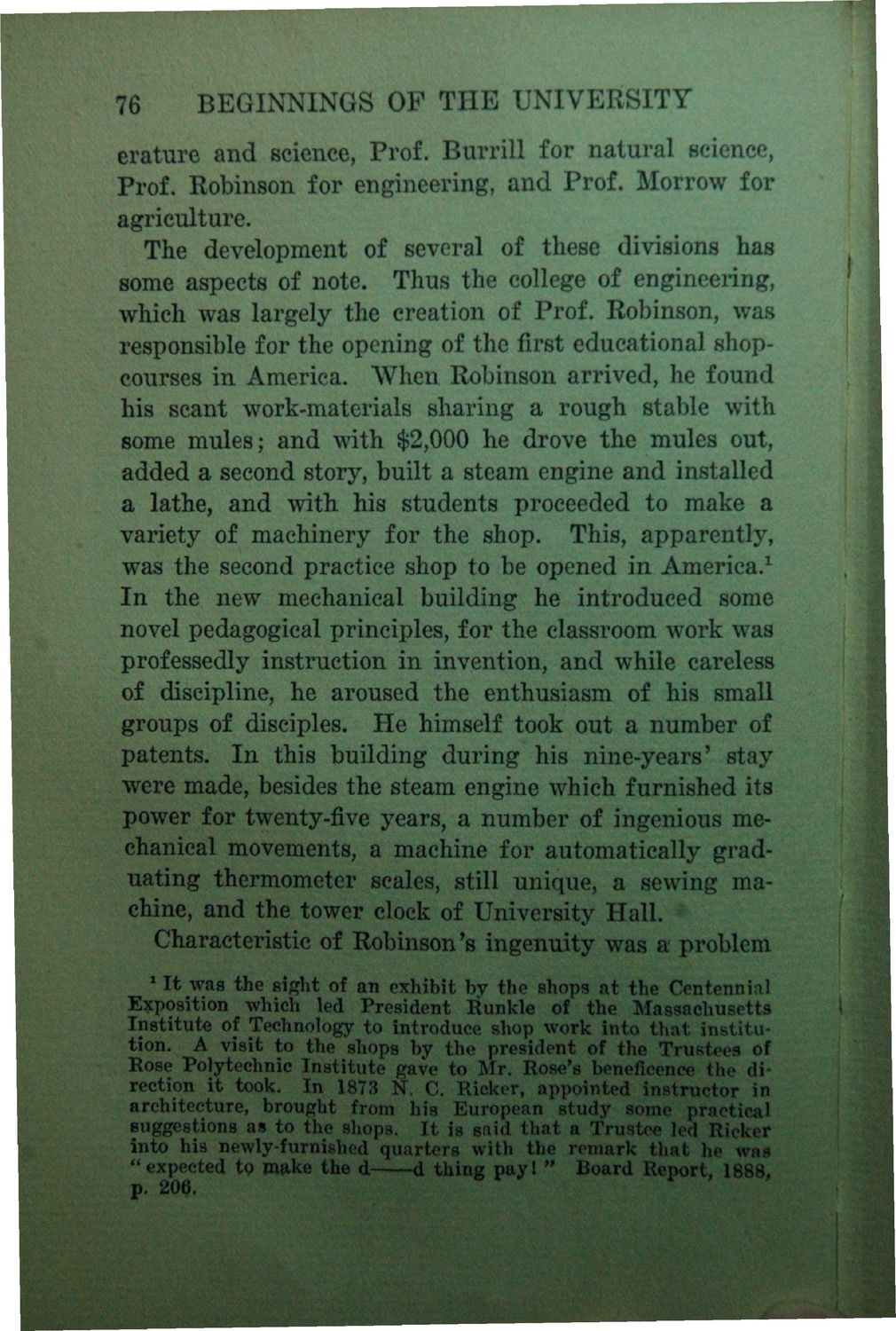| |
| |
Caption: Book - History of the University (Nevins)
This is a reduced-resolution page image for fast online browsing.

EXTRACTED TEXT FROM PAGE:
76 BEGINNINGS OF THE UNIVERSITY erature and science, Prof. Burrill for natural science, Prof. Robinson for engineering, and Prof. Morrow for agriculture. The development of several of these divisions has some aspects of note. Thus the college of engineering, which was largely the creation of Prof. Robinson, was responsible for the opening of the first educational shopcourses in America. When Robinson arrived, he found his scant work-materials sharing a rough stable with some mules; and with $2,000 he drove the mules out, added a second story, built a steam engine and installed a lathe, and with his students proceeded to make a variety of machinery for the shop. This, apparently, was the second practice shop to be opened in America.1 In the new mechanical building he introduced some novel pedagogical principles, for the classroom work was professedly instruction in invention, and while careless of discipline, he aroused the enthusiasm of his small groups of disciples. He himself took out a number of patents. In this building during his nine-years' stay were made, besides the steam engine which furnished its power for twenty-five years, a number of ingenious mechanical movements, a machine for automatically graduating thermometer scales, still unique, a sewing machine, and the tower clock of University Hall. Characteristic of Robinson's ingenuity was a problem It was the sight of an exhibit by the shopa at the Centennial Exposition which led President Runkle of the^Massachusetts Institute of Technology to introduce shop work into that institution. A visit to the shops by the president of the Trustees of Rose Polytechnic Institute gave to MJ^ Rose's beneficence the direction it tooV£j|.In 1873 N. 0. Ricker, appointed instnjRi& in architecture, brought from his European study some practical suggestions as to the shops. M t is said that a Trustee led Ricker into his newly-furnished quarters with the remark th^Mmwaa '0,expected to make the d~—d thing pay! " Board Repaid, 1888, 1 p. n Hi
| |